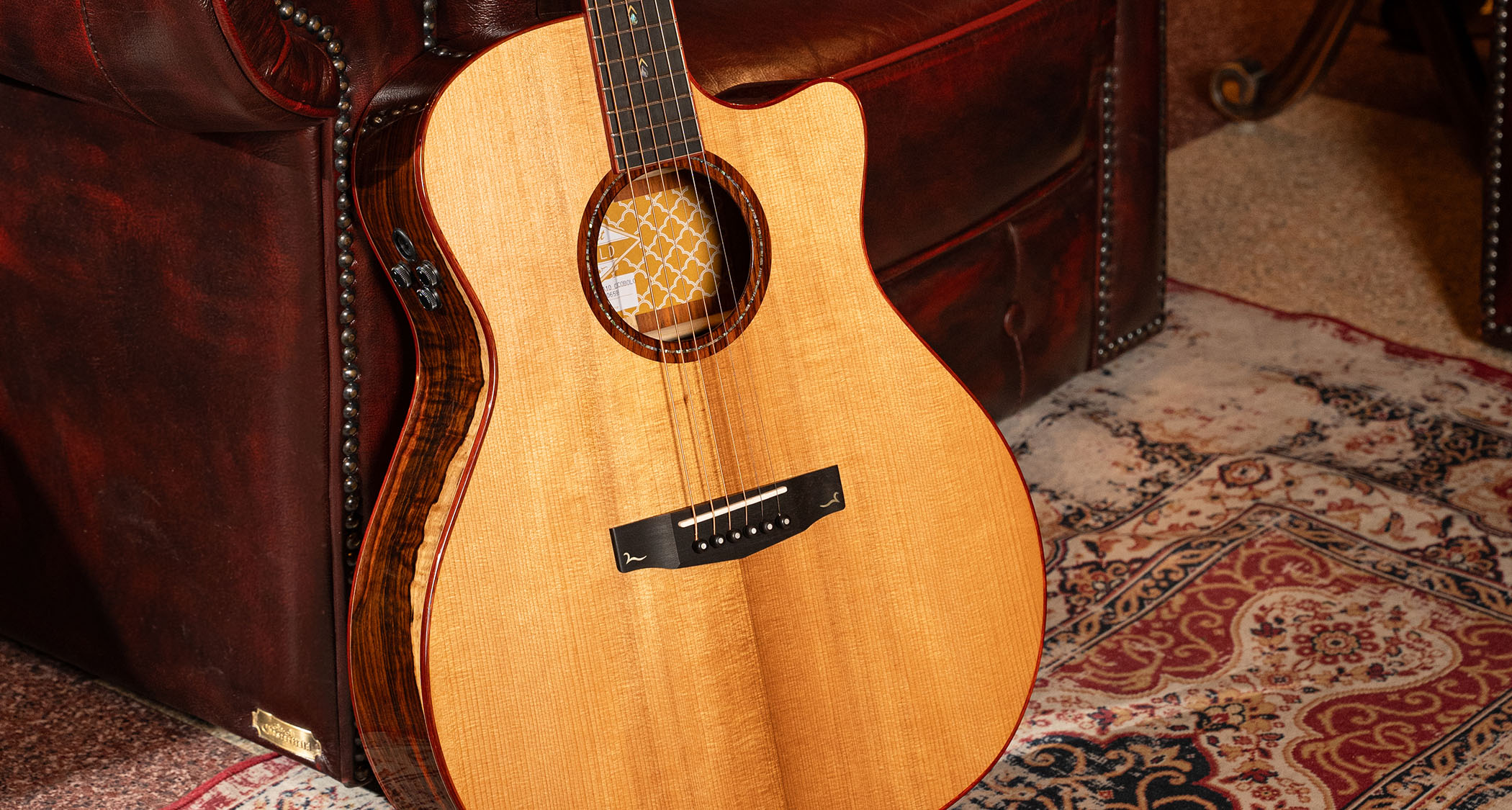A-Z of the blues
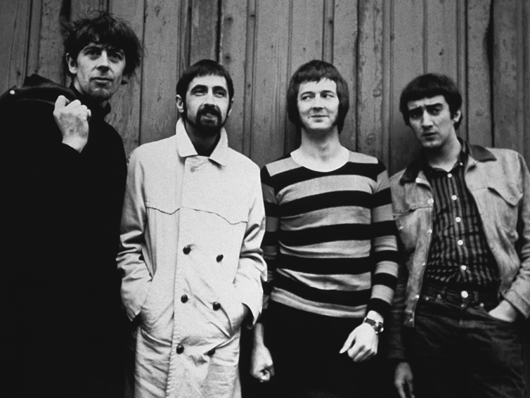
All Your Love
A is for… All Your Love
Kicking off John Mayall’s seminal 1966 Blues Breakers With Eric Clapton album, All Your Love proves that no matter what you think of present day Clapton, '60s Eric was the balls.
Wrapped around the business end of a Gibson Les Paul Standard, Eric pushed his Marshall 1962 30-watt 2 x 12 combo into a blistering overdrive that has driven tone fiends crazy ever since. These days, bagging Slowhand’s tone has been made that little bit easier thanks to the reissue of the Marshall 1962 combo, loaded with a deuce of 12-inch Celestion ‘Greenback’ speakers and fittingly rechristened the ‘Bluesbreaker.’
A is also for… Airline
When it comes to guitars, blues aficionado and White Stripe Jack White is best known for the 1965 red and white JB Hutto Montgomery Ward Airline models he used to record songs like Seven Nation Army. Eastwood Guitars offer a tasty reissue of Jack’s angular Airline, albeit with a chambered mahogany body in place of the original guitar’s Res-O-Glas (fibreglass) construction.
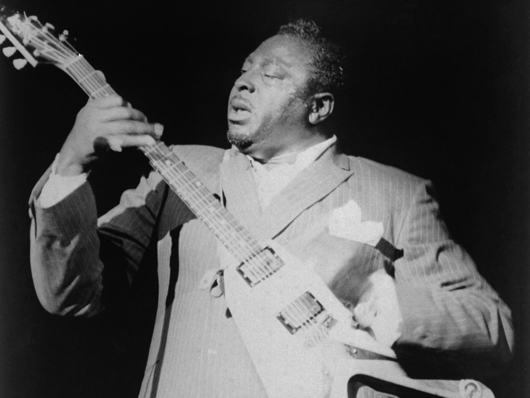
Badass!
B is for… Badass!
Blues can be restrained and reflective or just badass as hell. Albert King’s brooding 1967 release Born Under A Bad Sign falls into the latter category.
Played on Lucy, his ‘58 Gibson Flying V, King peppers the song with stinging licks, backed by Booker T & The MGs and The Memphis Horns. Equally badass is Death Letter Blues by Son House played on a resonator guitar. House (known as Eddie James House Jnr to his nearest and dearest) was a huge influence on country blues legend Robert Johnson. This live cover version by The White Stripes is also bad to the bone.
B is also for… Black cat bone
Often placed in a mojo bag, black cat bones were carried by blues singers to ward off evil. Muddy Waters mentions said bone, and a mojo, in his 1954 recording of (I’m Your) Hoochie Coochie Man.
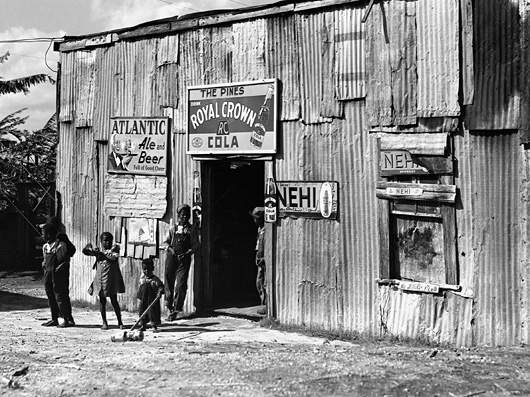
Chitlin' circuit
C is for… Chitlin’ circuit
The Chitlin’ circuit was the name given to a group of venues or ‘juke joints’ in the American South that catered specifically to the black community and travelling musicians in a time of racial segregation.
Just about every black artist from BB King to Ray Charles and James Brown made their bones on the Chitlin’ circuit. Jimi Hendrix did too. By the way, chitlins (also known as chitterlings) is a Southern soul food made from stewed pig intestines. Here’s a recipe if you fancy dishing it up.
Erm, we’re not hungry, thanks…
C is also for… Cuttin’ heads
Cuttin’ heads is a musical ‘duel’ between two blues guitarists. In the 1986 movie Crossroads Ralph ‘Karate Kid’ Macchio tears Steve Vai a new one to keep the Devil’s mitts off his soul. Fact: Vai played both guitar parts for the scene’s climax.
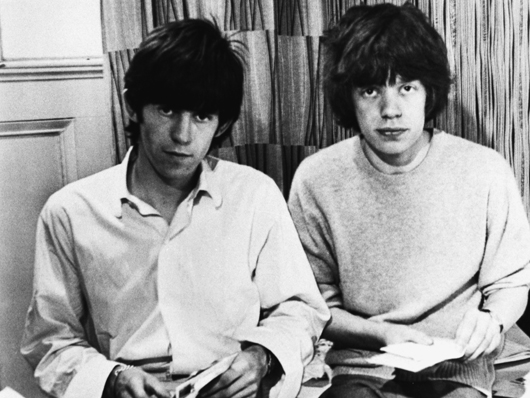
Dartford
D is for… Dartford
Yeah, Dartford in Kent!
When Keith Richards bumped into Mick Jagger on a train at Dartford Station in 1960 he spotted a bunch of albums under Jagger’s arm that included The Best of Muddy Waters. Two years later they hooked up with Brian Jones to form a band named after Muddy’s 1950 hit Rollin’ Stone.
The Rolling Stones were genuine blues fanatics who gave credit where it was due. In 1965 they insisted that blues legend Chester ‘Howlin’ Wolf’ Burnett be booked to perform on the American TV show Shindig! The Stones sat at the master’s feet while he boomed through How Many More Years.
D is also for… Diddley bow
A diddley bow is a primitive single-string guitar played with a slide. Watch Jack White of The White Stripes build a diddley bow, and frighten unsuspecting cattle. You can find instructions to build one for yourself here.
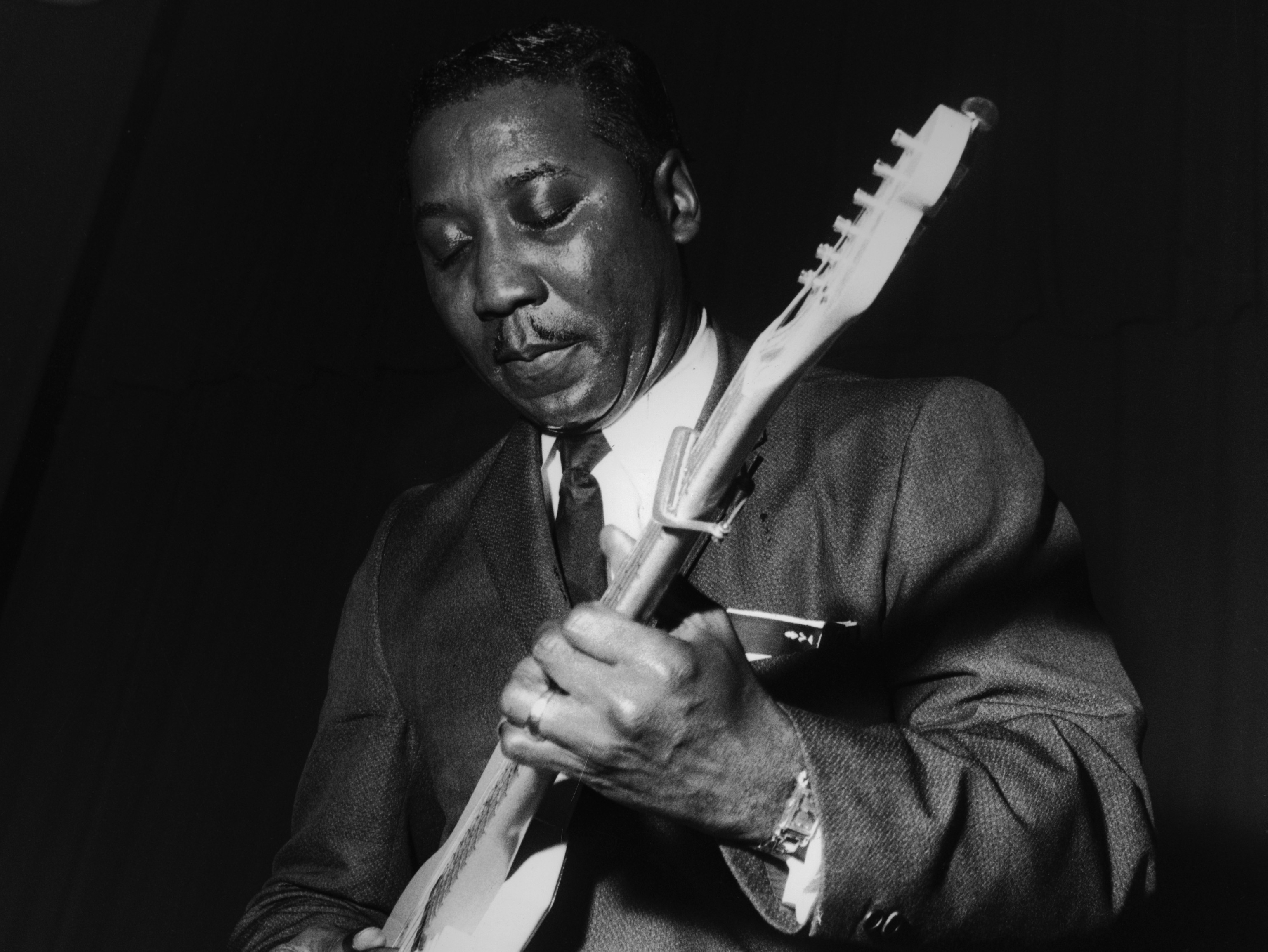
Electric
E is for… Electricity
Acoustic country blues was effectively finished when guitarists like T-Bone Walker in Texas and Muddy Waters in Chicago started amplifying their guitars in the late '40s. The era of electric blues was born.
It was while on tour in the UK in 1958 that Muddy Waters sowed the seeds of the British blues boom that would take root in the '60s. Bands like The Yardbirds, The Rolling Stones and The Animals fed off the raucous amplified guitar tone on Muddy’s records. Those bands in turn would spark the birth of British hard rock. Muddy Waters' late '50s visit had a huge impact on the British music scene.
E is also for… Epiphone
Not all blues guitarists dug Fender and Gibson guitars. John Lee Hooker had a thing for Epiphone axes. In this killer clip of Hobo Blues, Hooker is brandishing a beautiful early '60s Epiphone Zephyr E312TN ('T' denoted a thinline model; the 'N' a natural finish). It was made in the Gibson factory, to be fair…
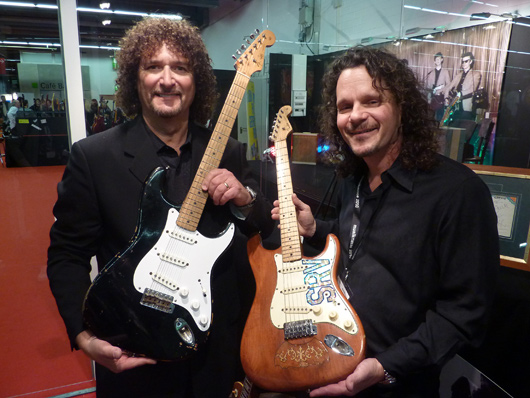
Fender
F is for… Fender
A huge number of blues artists play Fender guitars.
Take a look at the Fender website and you’ll eyeball signature Stratocasters with names like the late, great Stevie Ray Vaughan, his brother Jimmy Vaughan, John Mayer, Buddy Guy, Robert Cray and Kenny Wayne Shepherd scrawled on their headstocks. Not forgetting Eric Clapton. Jimi Hendrix is the most famous Strat player of them all, although he didn’t always look after them.
Telecasters were also big on the blues scene with Muddy Waters, ‘The Ice Man’ Albert Collins and Keef ‘The Human Riff’ Richards all preferring Leo Fender’s first plank of genius.
F is also for… Female
Blues wasn’t just a boy’s club. Take blues singer and guitarist Lizzie ‘Memphis Minnie’ Douglas for example. As a guitarist she regularly won head cuttin’ contests in nightclubs. Minnie also co-wrote When The Levee Breaks, later ‘revamped’ by Led Zeppelin…
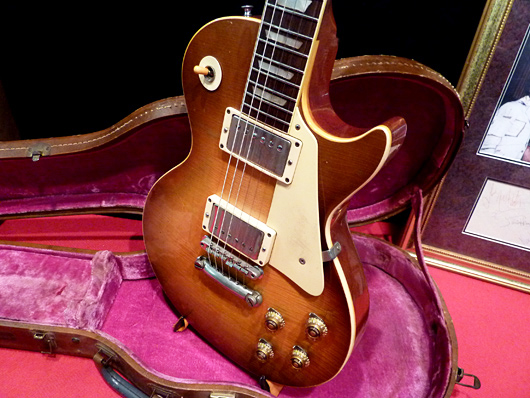
Gibson Les Paul
G is for… Gibson Les Paul
It’s hard to imagine that the mighty slab of tone that is the Les Paul was once so unloved by the guitar playing public that Gibson actually discontinued it. Fools!
Yep, the Les Paul range was dropped from the Gibson catalogue in 1960 to be replaced with the SG model (also briefly known as the Les Paul). That might have been the end of the old workhorse if guitarists like Keith Richards (who bought a ’59 Les Paul Standard in 1964), Peter Green, Jimmy Page and Eric Clapton hadn’t fallen in love with the guitar’s tone.
Thanks to demand the Les Paul Standard and Custom models were reintroduced in 1968, but vintage Lesters from 1958-60 are the holy grail, with all-original examples known to sell for as much as $1 million.
G is also for… Good Morning, Little Schoolgirl
Originally recorded by Sonny Boy Williamson in 1937, Good Morning, Little Schoolgirl has been covered countless times since. There are versions out there by Jonny Lang, Chuck Berry, Taj Mahal and many more.
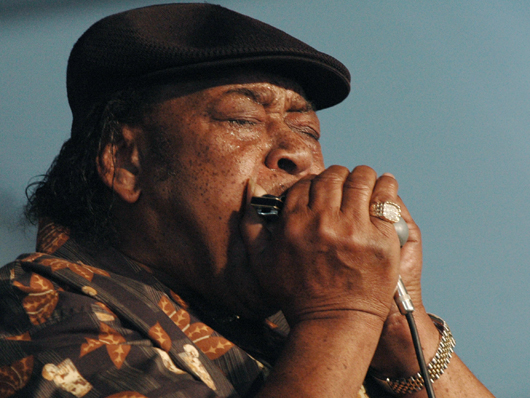
Harmonica
H is for… Harmonica
Aside from building yourself a diddley-bow from scraps or singing, which is free, a harmonica is probably the cheapest way to get into playing the blues.
Kick off with a Hohner 1896/20 Marine Band harmonica in the key of C and take it from there. You’ll find one in most music shops. Many of the blues harmonica legends started out on a Marine Band. For inspiration, listen to Little Walter romp through Wild About You Baby with Hound Dog Taylor and the Houserockers. That should do the trick.
H is also for… Humbuckers
While Seth Lover designed the humbucking pickup for Gibson in 1955, the company wouldn’t be granted the patent until 1959. In the meantime they put ‘Patent Applied For’ stickers on the underside of each pickup and created a tonal legend.
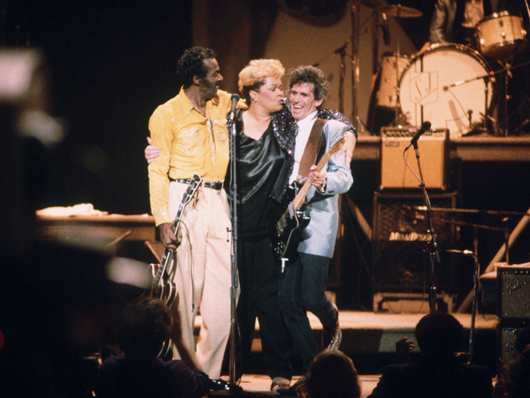
Influence
I is for… Influence
As Rolling Stone Keith Richards once said, "If you don't know the blues… there's no point in picking up the guitar and playing rock 'n' roll or any other form of popular music."
You can’t argue with that. Without the blues there would be no rock, metal (okay, neo-classical stuff aside), soul, country, surf… probably the lot.
Lyrically and rhythmically the blues has touched just about every genre of music. Case in point: “We never pretended to be anything other than a no-frills no bullshit blues rock band,” said Angus Young of AC/DC who channelled the blues on songs like The Jack.
I is also for… Ibanez
Got to give a shout out to the iconic bogie green Ibanez Tube Screamer overdrive pedal used by Texan blues legend Stevie Ray Vaughan. The reissue TS-808 and TS-9 models are the ones to bag. Originals are getting pricey!

Joanna
J is for… Joanna
And that's 'joanna' as in 'old joanna' as in slang for piano.
There is a rich tradition of piano blues, a boogie woogie style played by artists like Joseph William ‘Pinetop’ Perkins, 96 years old and still going strong, and Albert ‘Sunnyland Slim’ Luandrew.
Sunnyland Slim’s 1966 performance of Tin Pan Alley is spine-tingling thanks to a vocal that’s as powerful as his piano playing. His style influenced many of the pianists that followed including Ray Charles and Dr John.
J is also for… ‘Joliet’ Jake and Elwood Blues
The 1980 movie The Blues Brothers starring John Belushi and Dan Aykroyd wasn’t just a good laugh. It also featured some great performances by artists like Cab Calloway, Aretha Franklin and a smoking Boom Boom by Mr John Lee Hooker…
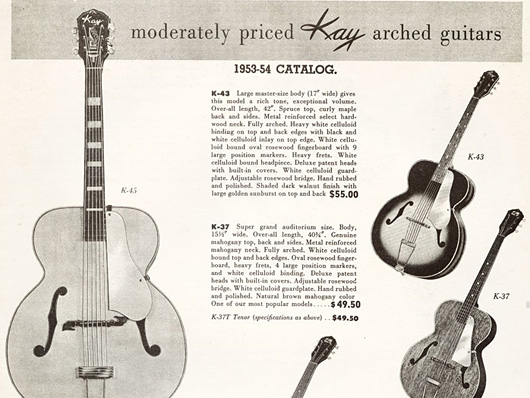
Kay
K is for… Kay
Kay was an American guitar brand that originally operated from the 1920s to the late '60s. Like Valco and Danelectro, Kay produced guitars for department stores.
Over the years Kay models have been played by blues royalty including Jack White, Eric Clapton, Ry Cooder, Howlin’ Wolf, Jimmy Reed and Big Joe Williams. Kay was sold to its rival Valco (manufacturer of Airline and Supro guitars) in 1967. The name was eventually used on a range of poorly made guitars and amps built in Japan.
For more info on Kay instruments visit www.kingofkays.com.
K is also for… Koko Taylor
Koko Taylor was the ‘Queen of the Blues.’ Possessed of a soulful but tough voice, Koko had enough power to drown out any band. This clip of her singing Wang Dang Doodle with harmonica player Little Walter is the proof…
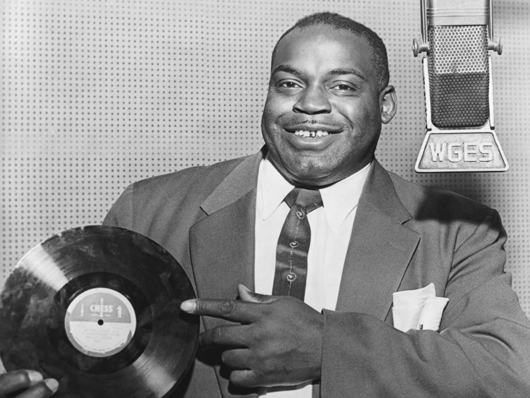
Lawsuits!
L is for… Lawsuits!
When Led Zeppelin recorded Whole Lotta Love, singer Robert Plant borrowed some lyrics from You Need Love, a song written by Willie Dixon for Muddy Waters.
The band had to settle the affair with Dixon, out of court, in 1985. "Page's riff was Page's riff," said Plant late. "It was there before anything else. I just thought, 'Well, what am I going to sing?' That was it… a nick. Now happily paid for.”
Willie Dixon’s name is now included on the writing credits for Whole Lotta Love.
L is also for… Lingo
Just like in the jazz music world, blues artists had their own cool slang and hipster talk. You dig? Maybe you were hip to some cats that could really wail. They were in the groove and the whole thing was a gas. Who knows, daddios…
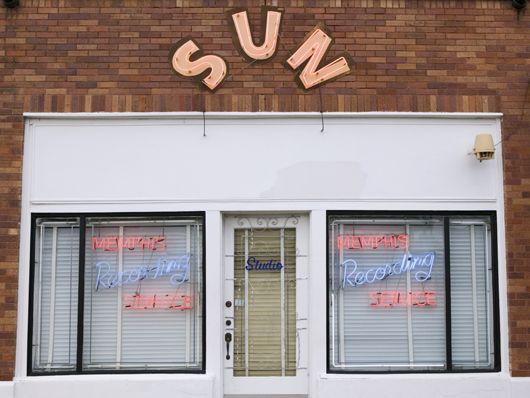
Memphis
M is for… Memphis
In terms of music, Memphis, Tennessee is probably the most historically rich city in the world. It’s the home of blues, soul, rock ‘n’ roll and rockabilly, the white boy blues.
Although it’s best known as the birthplace of rockabilly, Sam Phillip’s Sun Studio originally recorded black artists like BB King, Little Milton, James Cotton and Howlin’ Wolf. No-one else would record black musicians in Memphis in the early '50s but Sam Phillips had no such prejudice.
Sam died in 2003. His iconic studio is still open for business at 706 Union Ave.
M is also for: Mr Scratch
Mr Scratch or Old Scratch is the old folklore name for Beelzebub, Satan… the Devil. It was Scratch that supposedly met Robert Johnson at the crossroads at midnight to trade souls for lightning fast chops.
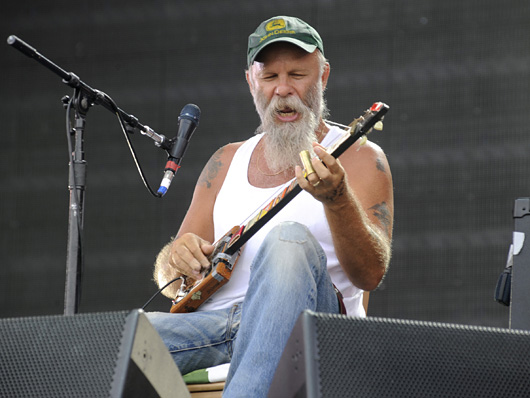
Nom de plumes
N if for… Nom de plumes
Stage names were all the rage among blues artists.
There was Magic Sam (Samuel Gene Maghett), pianist Memphis Slim (John Len Chatman), Pinetop Perkins (Joseph William Perkins), Tampa Red (Hudson Woodbridge) and of course, Muddy Waters… aka McKinley Morganfield. The list goes on and on.
The prefix ‘blind’ was surprisingly common with blues artists. Blind Blake, Blind Boy Fuller and Blind Willie McTell all used it for obvious reasons. Surprisingly, Father of the Texas Blues Blind Lemon Jefferson’s real christian name was Lemon. He was born Lemon Henry Jefferson.
These days artists like Seasick Steve (Steven Gene Wold, dontcha know) carry on the name-changing tradition of the blues.
N is also for… New blood
Blues is not a dead art form. Okay, most of the old guard have popped their clogs but you only have to look at guys like Joe Bonamassa and The Black Keys to see that blues has a future.
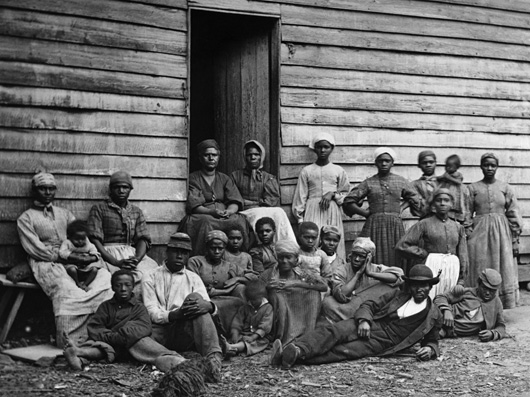
Origins
O is for… Origins
The ugly truth is that blues in its earliest form was brought to America by African slaves. Even after they were freed, life was a daily grind of working the fields for little reward.
To help lift their spirits they would sing while they worked. These 'field hollers', prison and work songs would eventually form the backbone of blues music. The music was officially born as a genre with the publication of sheet music for the Dallas Blues by Hart A Wand in 1912. It was the first published 12-bar blues.
O is also for… Overdrive
The sound of electric blues, dating back to the mid-'60s British boom at least, is creamy overdrive. Whether the sound is achieved by whacking up the volume on a valve amp or by using a pedal, dial in the neck pickup, head above the twelfth fret and make it sing.
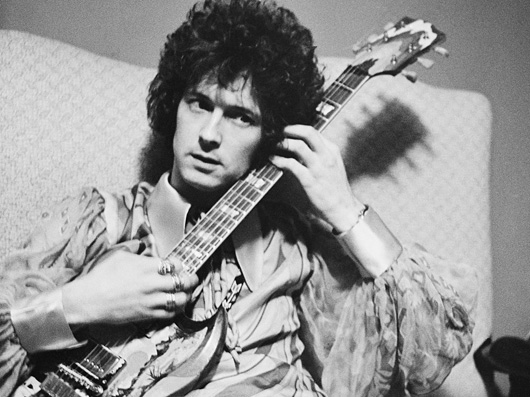
Pentatonic
P is for… Pentatonic
We’re talking scales here. The minor pentatonic is a five-note scale. The blues scale is almost the same beastie save the addition of an extra note, or flat 5th. This is the scale that brings the blues to life… or rather, the player does by bending strings and sustaining notes with judicious use of vibrato.
There’s a cool blues scale primer on this very website. Remember: the blues scale is a useful path to follow but don’t be afraid to step outside of it every now and again and throw in some strange notes.
P is also for… Parchman Farm
Parchman Farm (or the Mississippi State Penitentiary as it’s officially known) is a maximum security prison in the state of Mississippi. Bluesmen like Bukka White, who wrote Parchman Farm Blues, and Son House spent some time incarcerated there. Naughty boys...
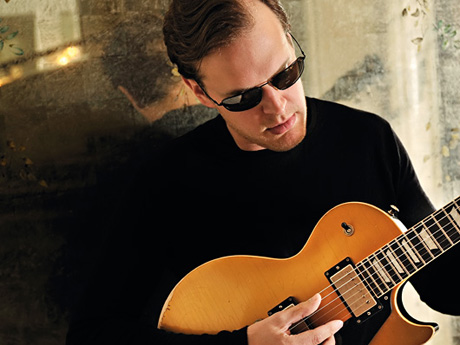
Quarryman's Lament
Q is for… Quarryman’s Lament
Quarryman’s Lament is a beautiful ballad on blues guitarist Joe Bonamassa’s 2010 album Black Rock.
Recorded on the Greek island of Santorini, the song features local musicians including a bouzouki and a clarino player. Why are we telling you all this? Well, the track proves that blues is a living, breathing and constantly evolving thing. The Greek musicians add a new dimension to Joe’s blues. The result is stunning.
Speaking of which, Joe’s signature Gibson Les Paul ain’t too shabby either. It's probably out of all of our leagues budget-wise so why not head over here instead for a chance to win a Gibson Les Paul Special II signed by Joe himself!
Q is also for: Quintessential
After you’ve bagged a Robert Johnson collection, get Texas Flood, the 1983 debut album by Stevie Ray Vaughan and Double Trouble. The Definitive John Lee Hooker is next. A decent country blues collection would be good too.
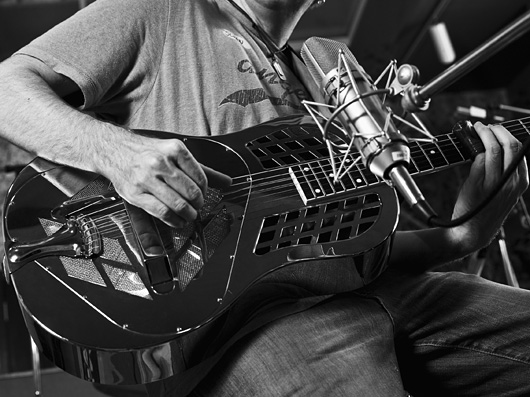
Resonators
R is for… Resonators
Resonators guitars feature metal cones under their bridges that act as mechanical ‘speakers’ producing much more volume than regular acoustic guitars.
Blues guitarists like Bukka White, Son House and Bo Carter played resonator guitars because they allowed them to perform to larger crowds and still be heard. Resonators have a distinctive tone as heard on songs like Peetie Wheatstraw’s 1932 classic Police Station Blues.
The best known resonator guitars are made by Dobro and National. They often come with a choice of rounded necks for regular playing and square necks for dedicated slide use.
R is also for… Riffs
Blues was a fertile breeding ground for killer riffs. There are thousands of great blues riffs to choose a favourite from but Muddy Waters' Mannish Boy has to be damn near the top of any blues fanatic’s list.
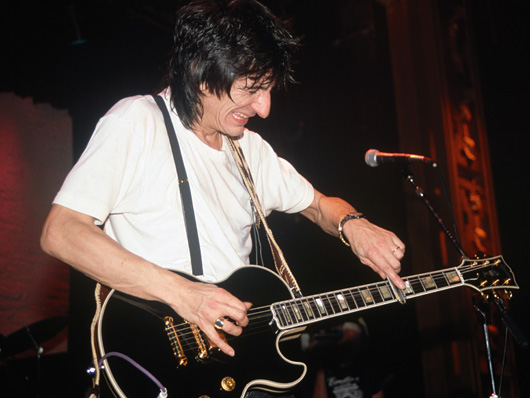
Slide
S is for… Slide
You can play slide guitar in standard tuning. Beatle George Harrison did and his slide playing was breathtaking.
You could also make life easier and use an open tuning. Examples include open E (low to high: E, B, E, G#, B and E) and open G (low to high: D, G, D, G, B and D). Get a decent slide or go old school blues and use a cigarette lighter, penknife (like Charley Patton) or a beer bottle.
When you’re ready for the ultimate challenge try hanging with the amazing Sonny Landreth. He’s as good as slide guitar gets.
S is also for… Stagger Lee
Stagger Lee was a murderer who has been immortalised in numerous blues songs as a pimp and a badass. We reckon Nick Cave and his Bad Seeds' collective take on the Stagger Lee legend is hard to beat for a slice of visceral modern blues.
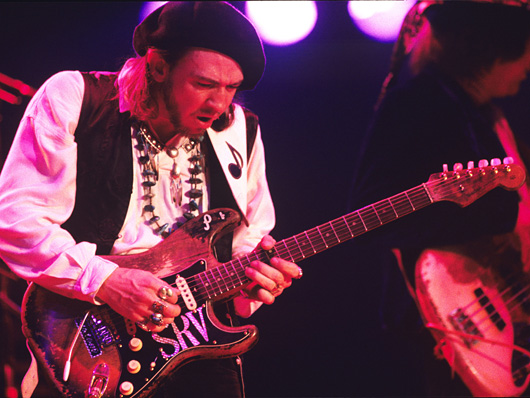
Texas blues
T if for… Texas blues
The state of Texas has produced an incredible number of great blues musicians. Blind Lemon Jefferson, Billy Gibbons of ZZ Top, T-Bone Walker, Albert Collins, Johnny Winter and more all hailed from the Lone Star State.
Arguably the greatest Texan blues guitarist of them all was Stevie Ray Vaughan. Not only was he an awesome guitarist, the tone he coaxed from his vintage Strats was incredible. Stevie’s main Strat was a '59 model fitted with a '61 neck that he named Number One.
Sadly, Stevie died in a helicopter crash in 1990. Here he is blasting through This House Is Rockin’. SRV RIP.
T is also for… Twelve-string guitar
While most country blues guitarists of the '20s and '30s were content with six-string guitars, others like Leadbelly and Blind Willie McTell preferred the sound of a 12-string. Those most popular 12-string acoustics available at that time were made by the Oscar Schmidt company under the Stella brand.
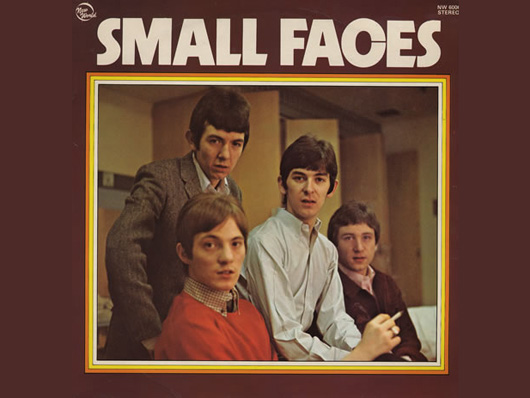
UK
U is for… UK
As we’ve seen, electric blues took off in a big way in the UK in the '60s.
The Mod scene embraced American blues artists and helped launch the careers of a new breed of British singer. There was Rod ‘The Mod’ Stewart, a pre-Bowie David Jones and Steve Winwood of the Spencer Davis Group.
If we can pick a favourite it would have to be Steve Marriott of The Small Faces. Check out Steve performing Black Coffee with Humble Pie and The Blackberries and see if you can think of a white boy that could sing the blues better.
U is also for… Ukulele
Can’t afford a guitar? Piano won’t fit in the house? Harmonica just doesn’t do it for you? The ukulele could be a good choice. It has a sweet tone, is easy to carry and you can play a decent blues on one - like this guy.
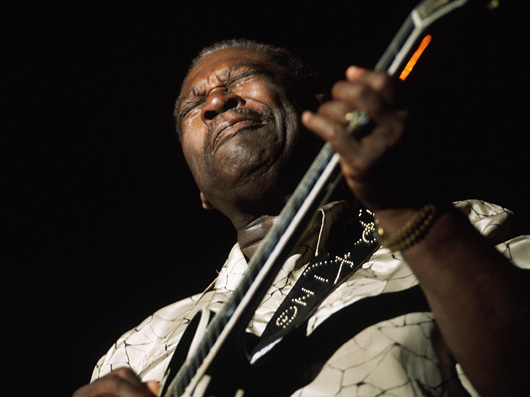
Vibrato
V is for… Vibrato
Great vibrato is an essential part of any blues guitarist’s trick bag. It’s far more important than speed.
When mastered it makes the guitar ‘sing’ and minute fluctuations in pitch help you sustain a note during a solo or lick. Choosing which notes to sustain is the thing that separates the legends from the bedroom warriors. Vibrato comes from the wrist and takes a bit of practice to develop the right touch. Keep practicing and it’ll come.
This clip of BB King playing Blues Boy’s Tune is a masterclass in using vibrato with taste.
V is also for… Violence
Whether they were singing about it or at the centre of the action, violence was an everyday part of a Delta bluesman’s life. Take Robert Johnson. Apparently poisoned in 1938, Robert is said to have left this world on all fours, howling like a dog. His hero, Charley Patton, survived having his throat cut (and eight marriages).
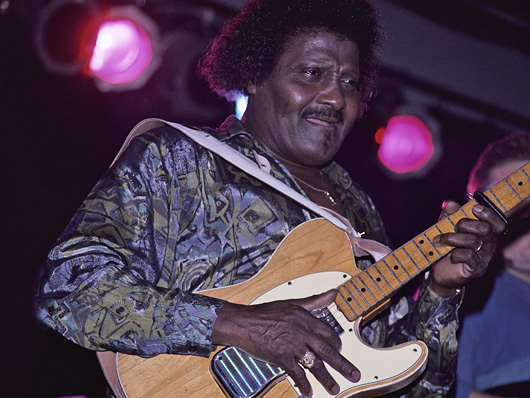
Weird tunings
W is for… Weird tunings
Whether by design or accident, some blues guitarists used pretty unusual tunings.
Texan legend Albert Collins tuned his Telecaster to open F minor (low to high: F, C, F, Ab, C and F) then used a capo on the 5th, 7th or 9th frets.
Albert King was left-handed but played right-handed guitars flipped over upside-down so the low E string was on the bottom. He apparently used open Em (low to high: C, B, E, G, B and E) or open F tuning (low to high: C, F, C, F, A and D) although he tried to keep his tuning secret!
W is also for… Walking bass
Walking basslines whether played on piano, organ, guitar, horns or an actual bass are an essential element of electric blues. Stevie Ray Vaughan and Double Trouble bassist Tommy Shannon is a master of the walking bassline. Check out Tommy playing on Stevie’s Texas Flood.
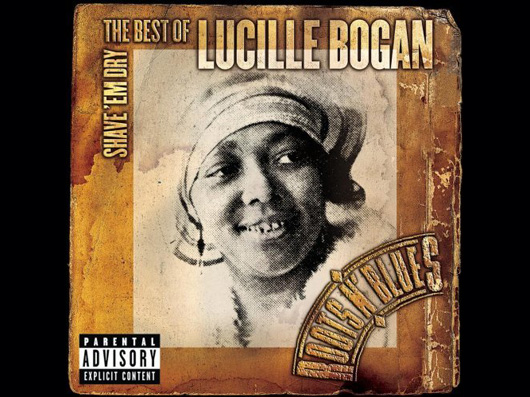
X-rated
X is for… X-rated
From the cheeky wordplay of Bullmoose Jackson’s Big Ten Inch Record and Bo Carter’s Banana In Your Fruit Basket to the less ambiguous one-track rhythm and blues of Poon-Tang by The Treniers, blues history is littered with artists whose sexual frankness on record would make a pornstar blush.
For the ultimate in blues-driven filth however we proudly present Lucille Bogan’s 1935 recording of Shave ‘Em Dry. Lucille’s dirty ditty makes 2 Live Crew sound like Boyzone.
X is also for… X marks the spot
Let 'X' represent the crossroads where Robert Johnson reportedly sold his soul to Satan in exchange for killer guitar chops. It was a fair exchange. Johnson was an incredible guitarist. His Complete Recordings collection is essential listening for any student of the blues.
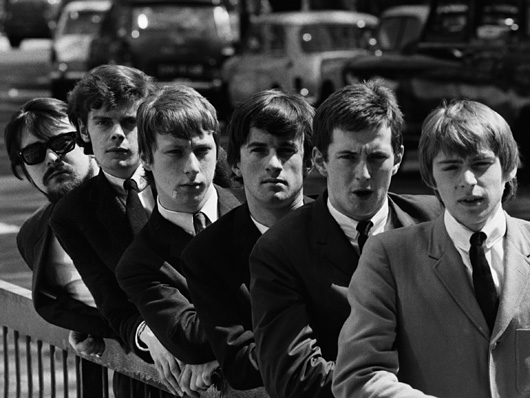
Yardbirds
Y is for… Yardbirds
The Yardbirds were - okay, ‘are’ as they are still on the go - a great British blues band of the '60s. Oh, and they also happened to feature three of the greatest British guitarists of all time: Eric Clapton, Jeff Beck and Jimmy Page.
Blues purist Eric bailed in 1965 when he saw that the band was moving away from its blues roots into pop rock fare like For Your Love. The earlier Eric-filled lineup played some fantastic blues.
Here’s a rare clip of the band performing Louise with Eric playing lead on a Fender Telecaster. It does not suck.
Y is also for… Yodeling
Yep, just like in rock ‘n’ roll, folk, country - and Switzerland - there have been frequent outbreaks of yodeling in blues music. The best known example is Tampa Red’s Worried Devil Blues. You can download it on iTunes. If you want.
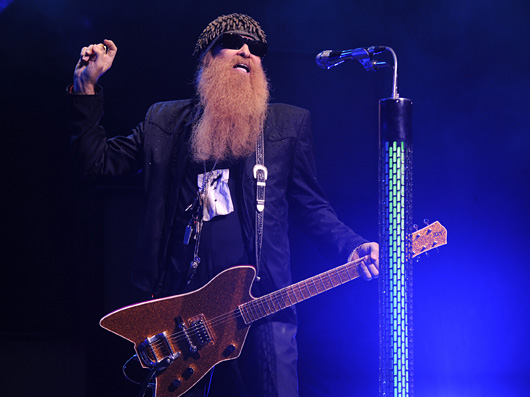
ZZ Top
Z is for… ZZ Top
Nobody did more to drag the blues into the 21st century than the Reverend Willie G and his cohorts in ZZ Top.
Although we prefer earlier ‘Top like Mexican Blackbird from the 1975 Fandango album there’s no denying the shot in the arm for blues that came with the release of Eliminator in 1983.
Billy Gibbons has an awesome guitar (and car) collection that’s been documented in his Billy F Gibbons: Rock + Roll Gearhead book. First class guitar porn baby! Learn some blues from Billy here.
Z is also for… Zydeco
Zydeco is an upbeat mix of blues, jazz and Cajun music that originated in the US state of Louisiana. The two standout instruments used in Zydeco are the accordion and the ‘vest frottoir’ or washboard. Here’s an infectious clip of Andre Thierry and Zydeco Magic.
Liked this? Now read: A-Z of prog rock
Connect with MusicRadar: via Twitter, Facebook and YouTube
Get MusicRadar straight to your inbox: Sign up for the free weekly newsletter
"Reggae is more freeform than the blues. But more important, reggae is for everyone": Bob Marley and the Wailers' Catch a Fire, track-by-track
“Part of a beautiful American tradition”: A music theory expert explains the country roots of Beyoncé’s Texas Hold ‘Em, and why it also owes a debt to the blues
"Reggae is more freeform than the blues. But more important, reggae is for everyone": Bob Marley and the Wailers' Catch a Fire, track-by-track
“Part of a beautiful American tradition”: A music theory expert explains the country roots of Beyoncé’s Texas Hold ‘Em, and why it also owes a debt to the blues







